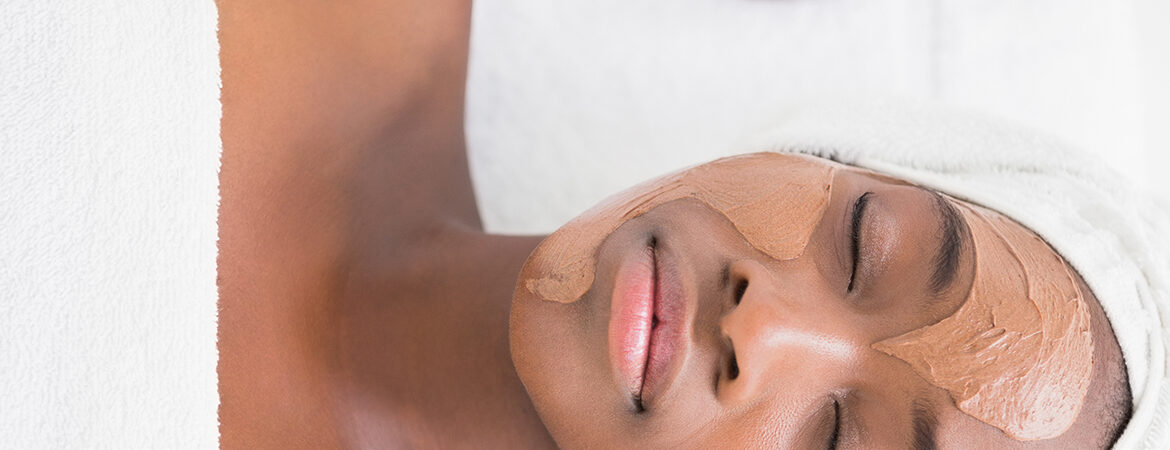HOW DO CLAY MASKS WORK?

Once the secret of luxury spas, today, face masks are the foundation of a good skincare regimen. Long before sheet and other specialty masks, there were clay masks. If you’re new to these facial products in general or are looking to boost the effectiveness of your current regimen, you may wonder if clay masks really work.
WHAT DOES A CLAY MASK DO?
Whether you paint it on with a brush, use a sponge to apply it with precision, or smear a dollop across your skin with your fingers, clay masks harden and tighten as they dry on the skin. But, how do clay masks work?
People have used clay since ancient Rome. Clay, made mostly of minerals, is effective in a variety of ways. Clay can offer sun protection in addition to being a bug repellent. However, when used as part of a skincare routine, clay can draw toxins from the skin, making it a favorite for acne-prone skin. As it dries, it not only lifts impurities from the skin, but it also absorbs excess surface oils which can clog pores.
CAN EVERYONE BENEFIT FROM A CLAY MASK?
If you don’t have acne or other skin issues, you may wonder if a clay mask offers you any benefits. In most cases, the answer is yes. A clay mask has several benefits, regardless of your skin type. It can …
- Brightens Skin – Skin that looks a bit dull may need some exfoliation. Using a clay mask can remove the dead skin cells, helping your complexion look bright and fresh.
- Tightens Pores – Some people have larger pores than others. This can often give the skin an uneven texture. A clay mask can help refine pores so that your complexion appears smoother.
- Restores Balance – Combination skin is a common problem. You may have an oily t-zone and normal or dry cheeks. A mineral-rich mask can help balance the zones without leaving it irritated and red dry.
WHAT CLAY MASK INGREDIENTS SHOULD I LOOK FOR?
Not all clay masks are created equal. Ingredients can be used to enhance the benefits of a clay mask. Here are some ingredients to look for that help cleanse and heal the skin without excessive drying.
KAOLIN CLAY
This clay is rich in silica dioxide and has a neutral pH. It’s gentle, making it suitable for those with dry or sensitive skin. It’s also mild enough for those with thin or mature skin. Often white, pale pink or light green, this clay can help soothe inflammation. Over time, it also stimulates skin cells for a brighter complexion.
SPIRULINA
The blue-green algae grow in salt and freshwater. It’s rich in nutrients, including selenium, tyrosine and vitamin E, known as powerful anti-aging agents. It also contains vitamins A and B12, calcium, phosphorus and iron, which help restore radiant skin by purifying your system.
SEA BUCKTHORN
Typically found in Asia and Europe, this small orange berry contains a whole host of nutrients, including omega 3, 6, 7 and 9, which aid in skin repair and regeneration. Sea buckthorn is ideal for reducing redness, and it’s gentle enough for dry and mature skin.
GREEN TEA
Well-known for its antioxidant properties, green tea also contains vitamin B2, which helps maintain collagen levels and keeps skin looking more youthful. Its antimicrobial properties make it useful in the treatment of acne and oily skin.
ALOE
Rich in vitamins A, B, C, D and E, aloe vera is renowned for its anti-inflammatory properties. It soothes irritation and forms a protective barrier on the skin, enabling it to remain hydrated.
Clay masks are among the top recommendations for skin that is parched, stressed out, prone to acne, or just in need of a little attention. Choosing the right one for your skin type can help you achieve a healthy, glowing complexion.


